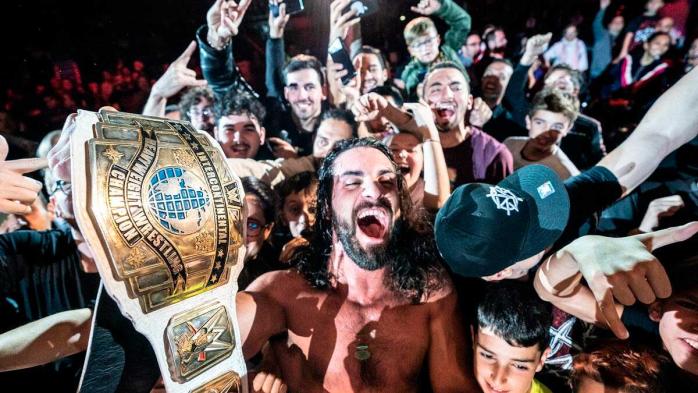
Welcome to the English version of Solowrestling Read more

Welcome to the English version of Solowrestling Read more


Wrestling, in countries where it doesn’t have deep cultural roots—like Spain or certain parts of Latin America—is experienced in a very different way than in places where pro wrestling is part of the social fabric.
I grew up hearing stories—sometimes from my parents, sometimes from older fans—about how wrestling used to be a huge deal in Spain during the 1970s and even into the early 80s. Back then, it was known locally as catch, and it wasn’t just something you watched on TV. There were live shows, packed venues like Campo del Gas in Madrid or The Price, and charismatic performers such as Hércules Cortés who felt like larger-than-life figures. Those nights left an imprint on a generation. But over time, as television changed, the live scene dried up and wrestling slowly vanished from Spain’s cultural radar.
Everything changed at the tail end of the 80s and early 90s, when WWF suddenly burst into Spanish living rooms through the channel Telecinco with the show Pressing Catch. Overnight, names like Hulk Hogan and The Ultimate Warrior became household names for a new generation of fans. It wasn’t a small-town show in a local gym anymore—it was a global product, with lights, pyro, and over-the-top characters that reignited wrestling fever in a country that hadn’t seen the business in years.
That TV boom spilled into real life. In 1991, WWF ran a tour in Spain that peaked with a huge event at the Palau Sant Jordi in Barcelona. Thousands packed the arena to watch a main event of Tito Santana vs. a young Undertaker, who was just starting to build the aura that would turn him into a legend. The timing couldn’t have been better—Barcelona was gearing up to host the 1992 Olympics, and for many Spanish fans, that night was proof that wrestling wasn’t just a TV curiosity. It could fill arenas and be part of the cultural conversation.
Many people look back on that period as a turning point, both for good and for bad. Some believe it helped build the product and created the first real fanbase in Spain. Others argue that the way it was presented—with the iconic commentary team of Héctor del Mar and JL Ibáñez calling the action in an over-the-top, almost cartoonish way—did more harm than good. Their style made wrestling feel “kid-friendly” at a time when, in the U.S. for example, it was treated as a more mainstream and culturally ingrained form of sports entertainment.
Spain ran into a double problem with wrestling. First, by the mid-90s, it disappeared from TV completely. That left kids like me feeling orphaned—we honestly thought wrestling had ended for good. Only a small handful of fans kept up with it through satellite feeds from places like Germany, where wrestling had a bigger, more professional presence. But for the rest of us, WWF just ceased to exist until it made its comeback in 1999.
That absence left a scar. With no live scene in the 80s and no TV presence in the 90s, there was no chance to build a real culture around wrestling. For years, it was seen as a passing fad, something cool for a while but not something with staying power or deep roots.
Then came the 2000s, and wrestling made a comeback on Spanish TV—this time in a big way. The channel Cuatro started broadcasting SmackDown around the middle of the decade, and suddenly we had another boom. Héctor del Mar was back on commentary, now joined by a young Fernando Costilla, and the product blew up again with a younger audience. The momentum even pushed other companies into the spotlight: TNA got airtime, and for a brief period, Spanish TV actually had three different promotions on the air at once. The ratings were insane—over a million viewers per show. I’ll never forget telling Jeff Jarrett about TNA’s numbers in Spain, which were comparable to WWE’s, and watching him not believe what he was hearing.
But in 2008, Cuatro pulled the plug. Combined with Spain’s financial crisis, that decision ended what turned out to be the last great boom for wrestling in the country. Since then, it’s been ups and downs—moments of hope here and there, but nothing close to the wave we once had. Fans from places like Chile or Argentina tell me they’ve seen the same thing happen in their countries: wrestling finds its moment, grabs attention, but struggles to stick as part of the mainstream culture.
This rollercoaster has kept wrestling in Spain from ever gaining a solid foothold. It’s one of the reasons WWE has always been cautious about doing something big here. As fans, we’re still a small, niche group—kind of like the “weird kids” of sports entertainment, misunderstood by most people around us. Personally, I think we’re a passionate force, but the product has never fully broken through, even now with WWE’s weekly shows and Premium Live Events streaming on Netflix.
The same feeling applies to the local wrestling scene. Schools and promotions have always worked against the tide, suffering from even less interest than what’s seen on TV. The fight to build something real is constant, but the obstacles are massive. Still, exceptions exist—like Axiom, a guy Dave Meltzer once described as having come “out of nowhere,” who represents a tiny but talented group of wrestlers who’ve made it to the big stage. And I don’t think the lack of stars is about talent—it’s about resources and opportunity.
It’s not just wrestlers who’ve broken through. Media outlets have, too. Solowrestling, for example, became the top Spanish-language wrestling website for years and even partnered with a major national sports outlet to push the product further.
I know this article might sound negative at times, but that’s not my goal. What I want is to show the reality of being a wrestling fan in countries where it isn’t part of the culture—where it’s seen as niche, even strange. That doesn’t make us any less passionate. In fact, I’d argue the opposite: it makes us some of the most authentic, die-hard fans you’ll ever meet.